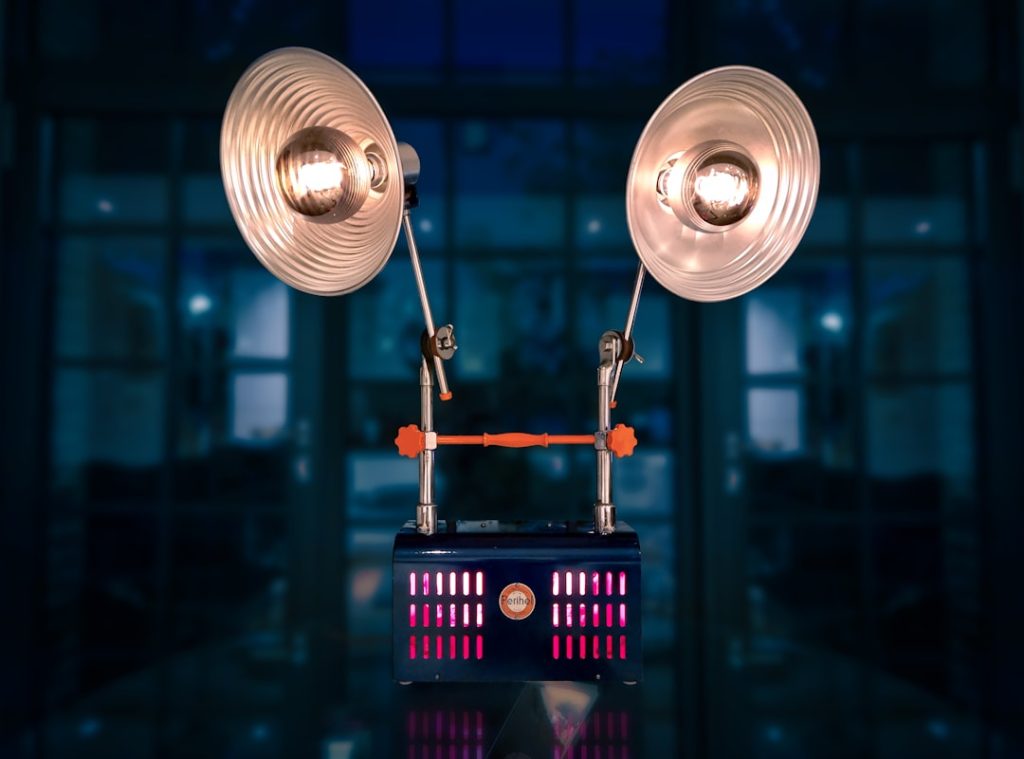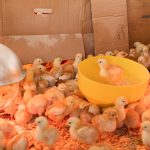Chickens are generally hardy birds that can tolerate cold temperatures quite well, but it’s important to understand their limits. Different breeds of chickens have varying levels of cold tolerance, with some being more cold-hardy than others. For example, breeds such as the Rhode Island Red, Plymouth Rock, and Orpington are known for their ability to withstand colder temperatures, while breeds like the Silkie and Polish may require extra care in cold weather.
Additionally, younger chickens and older hens may be more susceptible to the cold, as their bodies are not as efficient at regulating temperature. It’s important to observe your flock and understand their behavior in different weather conditions to determine their individual cold tolerance. By understanding the cold tolerance of your chickens, you can better prepare and provide the necessary care to keep them healthy and comfortable during the winter months.
Chickens have natural adaptations that help them cope with cold weather, such as their ability to fluff up their feathers to create an insulating layer of air and generate body heat. However, when temperatures drop significantly, chickens may need additional support to stay warm and healthy. It’s important to be aware of the signs of cold stress in chickens, such as huddling together for warmth, decreased egg production, lethargy, and frostbite on combs and wattles.
By understanding their natural behaviors and physical responses to cold weather, you can take proactive measures to ensure their well-being during the winter months.
Table of Contents
- 1 Providing Adequate Shelter and Insulation
- 2 Using Heat Lamps and Heaters Safely
- 3 Ensuring Proper Ventilation
- 4 Providing Warm Bedding and Nesting Areas
- 5 Offering Warm Water and Nutritious Feed
- 6 Monitoring and Adjusting for Individual Chicken Needs
- 7 FAQs
- 7.1 What are the best ways to keep chickens warm in sub zero temperatures?
- 7.2 How can I insulate my chicken coop to keep it warm in sub zero temperatures?
- 7.3 Is it safe to use heat lamps or heaters in a chicken coop?
- 7.4 How much bedding should I provide for my chickens in sub zero temperatures?
- 7.5 Why is good ventilation important in a chicken coop in sub zero temperatures?
Key Takeaways
- Chickens can tolerate cold temperatures, but understanding their cold tolerance is important for their well-being.
- Providing adequate shelter and insulation is crucial to protect chickens from extreme cold weather.
- Using heat lamps and heaters safely can help maintain a comfortable temperature for chickens without posing a fire hazard.
- Proper ventilation is essential to prevent moisture buildup and maintain air quality in the chicken coop.
- Providing warm bedding and nesting areas can help chickens stay warm and comfortable during cold weather.
- Offering warm water and nutritious feed is important for maintaining chickens’ health and energy levels in cold temperatures.
- Monitoring and adjusting for individual chicken needs is necessary to ensure that each chicken is comfortable and healthy during cold weather.
Providing Adequate Shelter and Insulation
Constructing a Well-Protected Coop
A well-constructed coop is essential for protecting chickens from the elements and maintaining a comfortable environment. The coop should be draft-free, but also well-ventilated to prevent moisture buildup, which can lead to respiratory issues.
Insulating the Coop for Maximum Comfort
Insulating the coop with materials such as straw, hay, or wood shavings can help retain heat and provide a cozy environment for the chickens. Additionally, ensuring that the coop is raised off the ground can help prevent cold drafts from entering and keep the floor dry.
Providing a Safe and Secure Outdoor Space
In addition to the coop, providing a secure outdoor run or enclosure can give chickens the opportunity to get fresh air and exercise while still being protected from harsh weather conditions. Adding windbreaks such as tarps or bales of hay around the perimeter of the run can help block cold winds and provide extra protection.
Regular Maintenance for a Safe and Healthy Environment
It’s important to regularly inspect the coop and run for any signs of damage or wear that could compromise its ability to keep chickens warm and safe. By providing adequate shelter and insulation, you can create a comfortable and secure environment for your chickens to thrive in during the winter months.
Using Heat Lamps and Heaters Safely

In extremely cold temperatures, supplemental heat may be necessary to keep chickens warm and prevent frostbite. Heat lamps and heaters can be effective tools for providing additional warmth in the coop, but it’s important to use them safely to avoid potential fire hazards and injuries to the chickens. When using heat lamps, it’s crucial to securely hang them from a stable structure and position them away from any flammable materials such as bedding or nesting materials.
Using a heat lamp with a built-in safety guard can help prevent accidental contact with hot surfaces. Alternatively, radiant heaters or flat panel heaters designed specifically for poultry coops can provide a safer and more energy-efficient option for supplemental heat. These heaters are typically mounted on the wall or ceiling of the coop and emit radiant heat to warm the surrounding area without the risk of fire associated with traditional heat lamps.
It’s important to regularly inspect heat sources for any signs of wear or damage and replace them as needed to ensure safe and effective operation. By using heat lamps and heaters safely, you can provide the necessary warmth for your chickens without compromising their safety or well-being.
Ensuring Proper Ventilation
While it’s important to keep chickens warm in cold weather, it’s equally important to ensure proper ventilation in the coop to maintain good air quality and prevent moisture buildup. Poor ventilation can lead to respiratory issues and high humidity levels, which can be detrimental to the health of the chickens. Ventilation openings should be positioned high up on the walls of the coop to allow for air circulation without creating drafts at ground level where the chickens roost.
Installing adjustable vents or windows that can be opened or closed as needed can help regulate airflow and prevent condensation from forming inside the coop. It’s important to regularly monitor the ventilation in the coop and make adjustments as necessary based on weather conditions. During periods of extreme cold, it may be necessary to partially close off vents to retain heat, while still allowing for some airflow to prevent moisture buildup.
By ensuring proper ventilation in the coop, you can create a healthy and comfortable environment for your chickens to thrive in during the winter months.
Providing Warm Bedding and Nesting Areas
In addition to shelter and insulation, providing warm bedding and nesting areas is essential for keeping chickens comfortable in cold weather. Bedding materials such as straw, hay, or wood shavings can provide insulation from the cold ground and help retain heat in the coop. It’s important to regularly clean and replace bedding to prevent moisture buildup and maintain a dry environment for the chickens.
Creating cozy nesting areas with ample bedding can encourage hens to lay eggs and provide a warm spot for broody hens to incubate eggs during the winter months. Adding extra nesting boxes with plenty of soft bedding can give chickens a sense of security and comfort while they lay and incubate eggs. Additionally, providing roosting bars with wide flat surfaces can allow chickens to comfortably perch and fluff up their feathers to stay warm while they sleep.
By providing warm bedding and nesting areas, you can create a comfortable and inviting environment for your chickens to rest and stay warm during the winter months.
Offering Warm Water and Nutritious Feed

Access to Warm Water
Water is vital for hydration and regulating body temperature, making it essential to regularly check waterers for freezing and provide fresh, unfrozen water multiple times a day. Using heated waterers or adding warm water to waterers can help prevent freezing and ensure that chickens have access to water at all times.
Nutritious Feed for Optimal Health
In addition to water, providing a balanced diet of nutritious feed is crucial for supporting chickens’ immune systems and maintaining their energy levels during cold weather. Feeding a high-quality layer feed supplemented with grains such as corn or oats can provide essential nutrients and extra calories to help chickens stay warm.
Additional Treats for Energy and Entertainment
Offering scratch grains or mealworms as treats can provide a source of energy and entertainment for chickens during periods of confinement due to cold weather. By providing these extras, you can help keep your chickens happy and healthy until the weather warms up again.
Supporting Your Chickens’ Health and Well-being
By offering warm water and nutritious feed, you can support your chickens’ health and well-being during the winter months. With a little extra care and attention, you can help your flock stay happy, healthy, and thriving until spring arrives.
Monitoring and Adjusting for Individual Chicken Needs
While general guidelines can be helpful for keeping chickens warm in cold weather, it’s important to monitor your flock closely and make adjustments based on their individual needs. Observing their behavior, physical condition, and egg production can provide valuable insights into how they are coping with cold weather. For example, older hens or molting chickens may require extra care and support during cold weather due to their reduced ability to regulate body temperature.
Additionally, monitoring individual chickens for signs of frostbite on combs, wattles, or feet can help identify any issues early on and provide prompt treatment if necessary. Making adjustments such as adding extra insulation, providing supplemental heat, or offering additional bedding based on individual needs can help ensure that each chicken is comfortable and healthy during cold weather. By monitoring and adjusting for individual chicken needs, you can provide personalized care that supports their well-being throughout the winter months.
In conclusion, understanding how chickens tolerate cold weather is essential for providing them with the care they need to stay healthy and comfortable during the winter months. By providing adequate shelter and insulation, using heat lamps and heaters safely, ensuring proper ventilation, providing warm bedding and nesting areas, offering warm water and nutritious feed, and monitoring individual chicken needs, you can create a supportive environment that allows your flock to thrive even in cold temperatures. With careful observation and proactive measures, you can ensure that your chickens stay warm, healthy, and happy throughout the winter season.
If you’re looking for ways to keep your chickens warm in sub zero temperatures, you may also be interested in learning about the best way to feed ducks. Check out this article for tips on what to feed your ducks to keep them healthy and happy.
FAQs
What are the best ways to keep chickens warm in sub zero temperatures?
Some of the best ways to keep chickens warm in sub zero temperatures include providing a well-insulated coop, using heat lamps or heaters, providing extra bedding, and ensuring good ventilation.
How can I insulate my chicken coop to keep it warm in sub zero temperatures?
You can insulate your chicken coop by using materials such as foam board, straw bales, or reflective insulation. Make sure to insulate the walls, ceiling, and floor to keep the warmth inside the coop.
Is it safe to use heat lamps or heaters in a chicken coop?
It is safe to use heat lamps or heaters in a chicken coop as long as they are installed properly and used according to the manufacturer’s instructions. Make sure to keep them away from flammable materials and to use a GFCI outlet for safety.
How much bedding should I provide for my chickens in sub zero temperatures?
In sub zero temperatures, it is recommended to provide at least 6-8 inches of bedding for your chickens. This will help to insulate the coop and keep the chickens warm.
Why is good ventilation important in a chicken coop in sub zero temperatures?
Good ventilation is important in a chicken coop in sub zero temperatures to prevent moisture buildup, which can lead to frostbite and respiratory issues in chickens. Proper ventilation will help to maintain a dry and healthy environment for the chickens.
Meet Walter, the feathered-friend fanatic of Florida! Nestled in the sunshine state, Walter struts through life with his feathered companions, clucking his way to happiness. With a coop that’s fancier than a five-star hotel, he’s the Don Juan of the chicken world. When he’s not teaching his hens to do the cha-cha, you’ll find him in a heated debate with his prized rooster, Sir Clucks-a-Lot. Walter’s poultry passion is no yolk; he’s the sunny-side-up guy you never knew you needed in your flock of friends!







